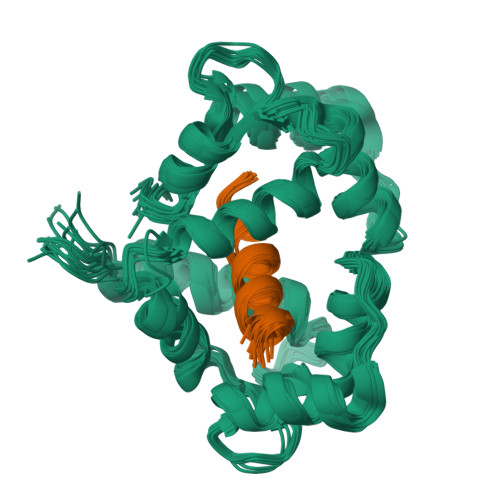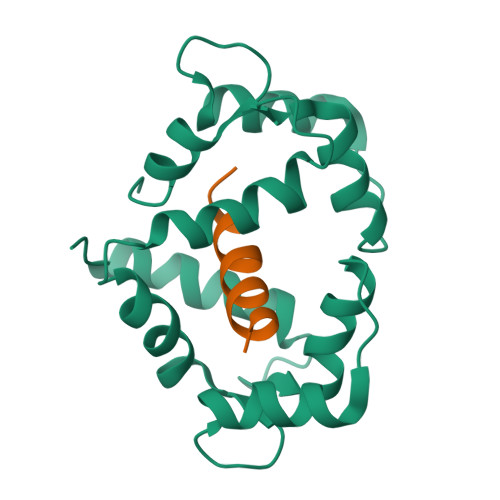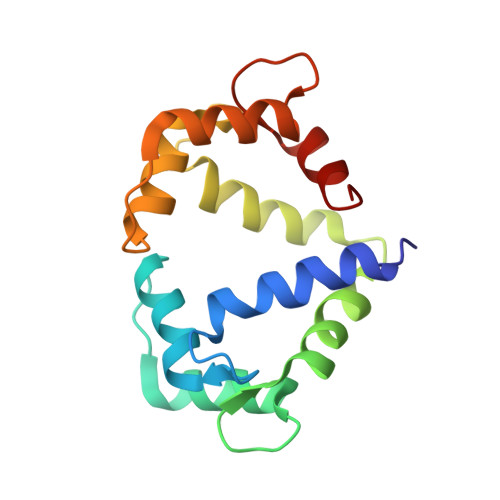Structure and Dynamics of Calmodulin (CaM) Bound to Nitric Oxide Synthase Peptides: Effects of a Phosphomimetic CaM Mutation.
Piazza, M., Futrega, K., Spratt, D.E., Dieckmann, T., Guillemette, J.G.(2012) Biochemistry 51: 3651-3661
- PubMed: 22486744
- DOI: https://doi.org/10.1021/bi300327z
- Primary Citation of Related Structures:
2LL6, 2LL7 - PubMed Abstract:
Nitric oxide synthase (NOS) plays a major role in a number of key physiological and pathological processes. Knowledge of how this is regulated is important. The small acidic calcium binding protein, calmodulin (CaM), is required to fully activate the enzyme. The exact mechanism of how CaM activates NOS is not fully understood. Studies have shown CaM to act like a switch that causes a conformational change in NOS to allow for the transfer of an electron between the reductase and oxygenase domains through a process that is thought to be highly dynamic. To investigate the dynamic properties of CaM-NOS interactions, we determined the solution structure of CaM bound to the inducible NOS (iNOS) and endothelial NOS (eNOS) CaM binding region peptides. In addition, we investigated the effect of CaM phosphorylation. Tyrosine 99 (Y99) of CaM is reported to be phosphorylated in vivo. We have produced a phosphomimetic Y99E CaM to investigate the structural and functional effects that the phosphorylation of this residue may have on nitric oxide production. All three mammalian NOS isoforms were included in the investigation. Our results show that a phosphomimetic Y99E CaM significantly reduces the maximal synthase activity of eNOS by 40% while having little effect on nNOS or iNOS activity. A comparative nuclear magnetic resonance study between phosphomimetic Y99E CaM and wild-type CaM bound to the eNOS CaM binding region peptide was performed. This investigation provides important insights into how the increased electronegativity of a phosphorylated CaM protein affects the binding, dynamics, and activation of the NOS enzymes.
Organizational Affiliation:
Department of Chemistry, University of Waterloo, Waterloo, Ontario N2L 3G1, Canada.

















